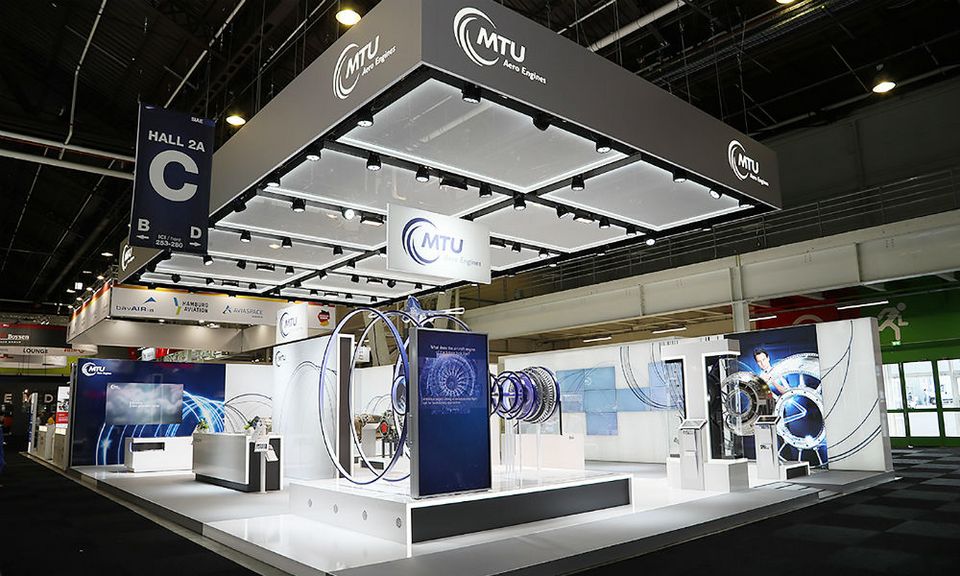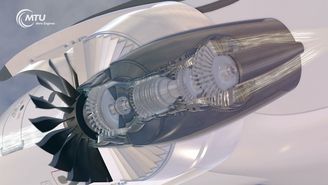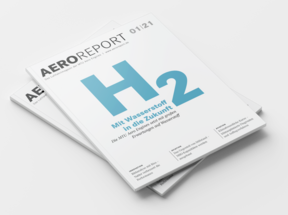Detail
A modern brand for modern engines
In clear type and in trendy lower case, the abbreviation “mtu” stands for the somewhat unwieldy name of the joint venture that was formed on July 11, 1969: MTU Motoren- und Turbinen-Union München GmbH M. A. N. Maybach Mercedes-Benz. This JV merged the aero engine and diesel engine activities of Daimler-Benz and MAN at the Munich and Friedrichshafen sites. The full name of the company at that time—it has been trading as MTU Aero Engines since 2000—makes it clear that the company’s roots go back to the very beginnings of motorized flight.
One of MTU’s “founding grandfathers” was Karl Rapp from Ehingen, whose engine works in the north of Munich were taken over by Bayerische Motorenwerke, BMW for short, in 1917. BMW’s blue-and-white logo still points to the company’s origins in aero engine construction today: it depicts a stylized aircraft propeller in motion from the front. Wilhelm Maybach, a former designer at Daimler, and his son Karl founded a company in Friedrichshafen in 1909 to work on engines for Zeppelin airships. 1934 was the year that BMW Flugmotoren GmbH was founded on the company’s premises on the northern edge of Munich, where its legal successor MTU Aero Engines still has its headquarters today. In 1989, MTU was integrated into the Daimler Group’s Dasa organization; the two divisions parted company again in 2000 with the founding of EADS, now the Airbus Group. MTU Friedrichshafen, with its focus on large diesel engines, is now part of Rolls-Royce Power Systems.
As the first edition of “mtu heute,” the then MTU employee newspaper, reports: “Daimler-Benz AG and Maschinenfabrik Augsburg-Nürnberg AG decided to extend their existing cooperation on the development and research of gas turbine engines and jet engines to include manufacturing and sales.” And that issue’s top news was the flight certification run that the new MTU/RB 193-12 engine had just completed—for the planned VAK 191 B vertical takeoff aircraft. While the VAK 191 B never made it past the prototype stage and has long been consigned to history, another headline from that 1970 issue of “mtu heute” seems highly topical: “The shortage of manpower in the German economy is also a particular problem for MTU,” it reads. Back then, the reason was the ramp-up of the most modern engine of its time, the CF6-50, in which MTU had secured a stake.




